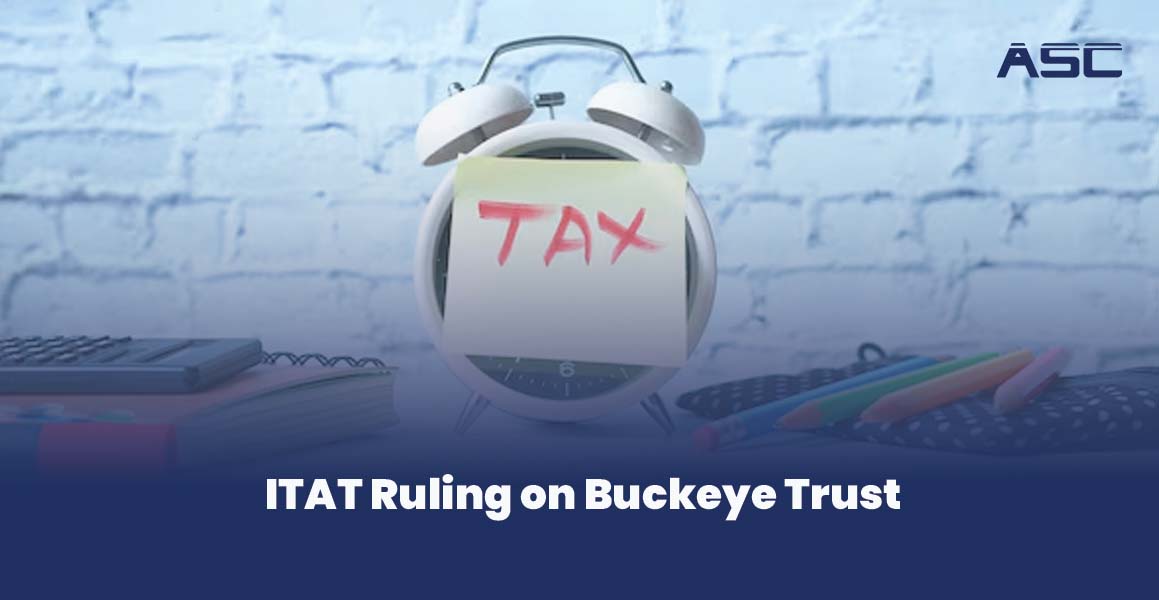ITAT Ruling on Buckeye Trust: Key Takeaways and Taxation Insights

The recent ruling by the Bangalore Income Tax Appellate Tribunal (ITAT) regarding Buckeye Trust has drawn significant attention in the financial and legal spheres. The case delves into the taxation of interest in partnership firms received by private discretionary trusts, marking a critical interpretation of Section 56(2)(x) of the Income Tax Act, 1961.
In this blog, we will unpack the background, key observations, legal interpretations, and implications of this ruling, providing clarity on how trusts and stakeholders can navigate the complex regulatory framework.
What is Section 56(2)(x) of the Income Tax Act?
Section 56(2)(x) deals with the taxation of money or property received without consideration or for inadequate consideration. Its primary objective is to prevent tax avoidance through the transfer of assets without adequate valuation.
Key Provisions of Section 56(2)(x):
- Applicable to individuals, trusts, and other legal entities.
- Covers both immovable and movable property.
- Tax is levied if the aggregate value exceeds INR 50,000.
- Exceptions include transactions involving relatives, inheritance, or charitable purposes.
Background of the Buckeye Trust Case
- Buckeye Trust, a private discretionary trust, received an interest in partnership firms valued at INR 669.27 crores.
- The Assessing Officer (AO) accepted the return filed by the trust without detailed examination.
- The Principal Commissioner of Income Tax (PCIT) invoked Section 263, deeming the AO's order erroneous and prejudicial to revenue interests.
- The Bangalore ITAT upheld the PCIT's revisionary powers and ruled in favor of taxation under Section 56(2)(x).
Key Observations by the Bangalore ITAT
Interest in Partnership Firms as 'Shares':
- The tribunal interpreted that 'interest in partnership firms' falls under the term 'shares' as defined in Explanation (d) of Section 56(2)(vii).
- The word 'shares' isn’t restricted to company shares but includes portions of ownership in other financial structures.
Literal vs Contextual Interpretation:
- The tribunal highlighted that the term 'and' in 'shares and securities' should be read as 'or' to avoid absurd results.
- Judicial precedents support such contextual interpretation.
Tax Evasion Concerns:
- The arrangement was viewed as an attempt to bypass tax provisions.
- Transactions lacking commercial substance and were seen as an effort to transfer substantial assets without adequate taxation.
Fiduciary Capacity Argument Rejected:
- The trust argued that the assets were held in fiduciary capacity.
- The tribunal dismissed this claim, noting that specific tax provisions exist for private discretionary trusts.
Why is the ITAT Ruling Significant?
Clarity on Taxability of Trust Assets:
- The ruling reinforces that interest in partnership firms can be treated as 'shares' for tax purposes.
Interpretation of Section 56(2)(x):
- Provides judicial clarity on how terms like 'shares' and 'securities' should be interpreted in tax law.
Precedent for Future Cases:
- This judgment sets a precedent for similar cases involving trusts and high-value asset transfers.
How Does Section 56(2)(x) Apply to Trusts Now?
- Any asset transferred to a trust must be evaluated under Section 56(2)(x).
- Trust deeds and asset valuations must be carefully documented.
- Fiduciary arguments must align with existing legal provisions to avoid disputes.
Implications for Private Trusts and Taxpayers
Increased Scrutiny:
- Tax authorities are likely to scrutinize transactions involving trusts more closely.
Documentation Standards:
- Trusts must ensure robust documentation and valuation reports to justify transactions.
Financial Transparency:
- Increased emphasis on transparency in asset transfers to trusts.
Steps to Ensure Compliance
Detailed Trust Deeds:
- Clearly define beneficiaries and their entitlements.
Professional Valuation:
- Obtain third-party valuation for high-value assets.
Consult Tax Experts:
- Seek advice from experienced tax professionals to structure transactions.
Regular Audits:
- Conduct periodic audits to ensure compliance with tax regulations.
Practical Example
- A settler transfers assets worth INR 100 crore to a private trust.
- If the assets include partnership interests, they must be evaluated as 'shares' under Section 56(2)(x).
- Any ambiguity in the trust deed regarding beneficiaries may lead to tax disputes.
Common Challenges Faced by Trusts
Misclassification of Assets:
- Incorrectly classifying partnership interests as non-taxable.
Inadequate Documentation:
- Failure to maintain detailed transaction records.
Ambiguities in Trust Deeds:
- Poorly worded clauses may invite litigation.
Final Thoughts
The Bangalore ITAT ruling on Buckeye Trust serves as a wake-up call for trustees, tax professionals, and stakeholders. It underscores the need for clarity, transparency, and legal compliance in structuring trust transactions. Trusts must proactively address the nuances of Section 56(2)(x) to prevent disputes and ensure seamless compliance.
By adhering to best practices in documentation, valuation, and regulatory compliance, trusts can mitigate risks and navigate the evolving tax landscape effectively.

Leave a Reply